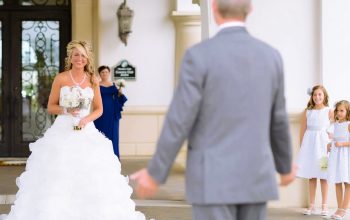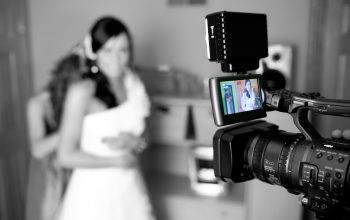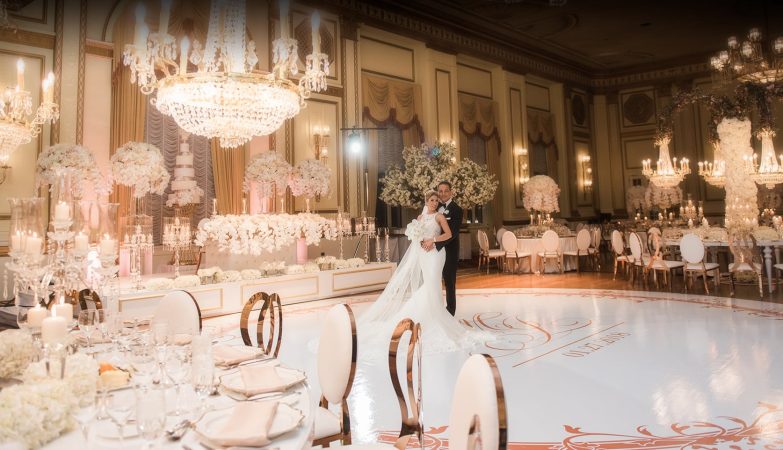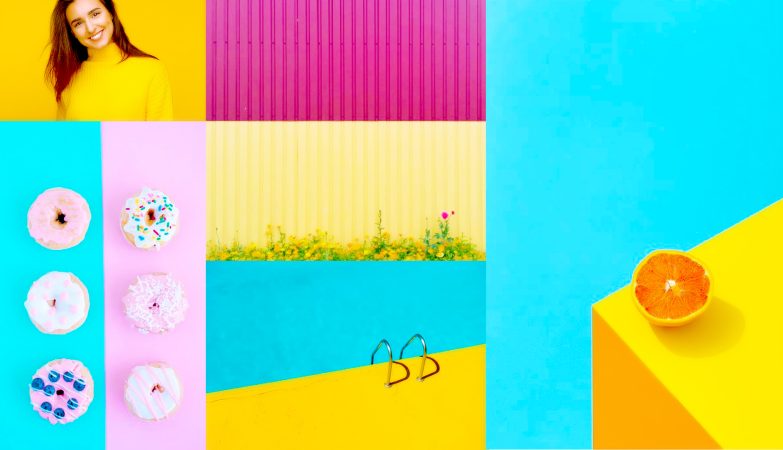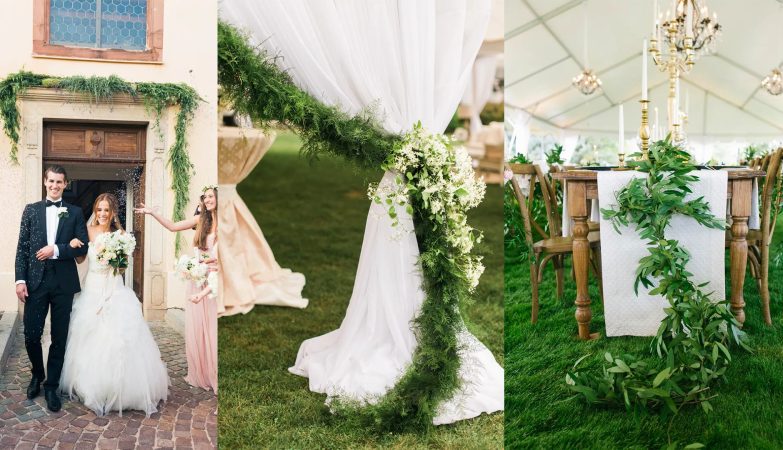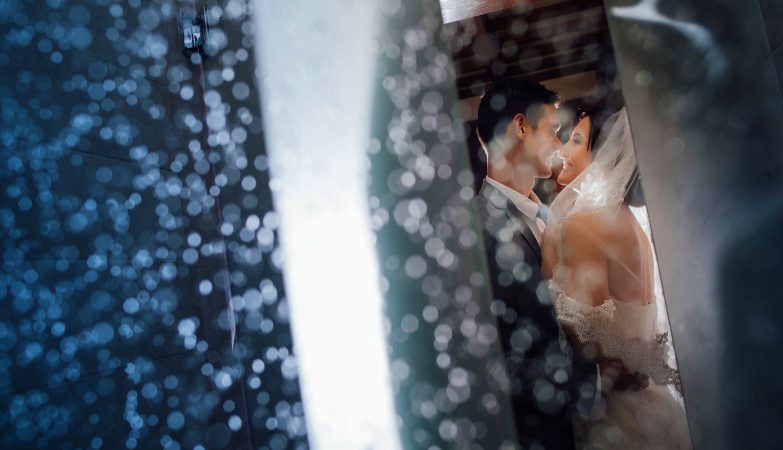

Enhanced Color
What it is: A series of color layers and faded washes “painted” onto the image in post-production to highlight certain tones and de-emphasize others.
Good for: Creating romantic and whimsical engagement and wedding portraits and enhancing “action” shots of dancing guests.
From the photographer: “To enhance a visually interesting image in post-production, I can sometimes spend an hour or so on a single photo, adjusting the hues to create the style and feel of the wedding or engagement session,” says W. Scott Chester.

Vintage Process
What it is: An effect created in post-production that adds milky, washed-out tones (of red or yellow to the photograph.
Good for: Getting dreamy, nostalgic-looking engagement and wedding portraits and first-dance shots (think: your great-aunt’s 1960s-era wedding album).
From the photographer: “For a while, a ‘vintage’ wedding meant photographing engagement photos at a county fair and floral centerpieces in mason jars,” says Christine Farah. “But now couples are taking a less literal approach and simply want to add warmer tones and retro colors in postproduction for a more modern interpretation of ‘vintage’-looking photos.”

Instant Prints
What it is: An instant black-and-white print à la classic Polaroids (plus a negative for later production).
Good for: Printing retro, grainless snapshots of intimate moments such as the first dance or candids of guests at the tables.
From the photographer: “Because everyone is so used to digital photography these days, they’ve forgotten about Fuji instant prints,” says Jonathan Canlas. “But guests love it when I bring out an instant camera at weddings – especially because they can take a print home.”

Texture Process
What it is: A combination of post-production effects that shift color and tone in the image to create a grainier texture, mimicking the warmth and complexity of film photography.
Good for: Turning any wedding moment into a grainy, moody, artistic photo.
From the photographer: “I create a 1970s-era nostalgia with this texture effect,” says Noa Azoulay-Sclater of Feather Love Photography. “I’m influenced by artists from that time period, including everything from album covers to photographer William Eggleston, which my clients – often artistic types themselves – similarly relate to.”

Tilt-Shift Lens
What it is: An outgrowth of architecture photography, the tilt-shift lens creates a narrow area of focus by blurring out the rest of the image.
Good for: Achieving a hazy, deliberately abstract look for both wide and detail shots, from wedding portraits to still lifes to ceremony overviews.
From the photographer: “This technique adds a fresh perspective to your images,” says Braedon Flynn. “But it needs to be done correctly, otherwise it might leave you feeling dizzy.”

Animated Gifs
What it is: Multiple frames strung together in post-production (to create the impression of video-esque movement.
Good for: Sharing lighthearted moments, like engagement portraits and the first dance, on your wedding website.
From the photographer: “You’ll recognize animated GIFs as those old-fashioned, blinking Internet ads, but now photographers are using them as a way to be more playful with wedding imagery,” (says Nate Kaiser of The Image is Found. “There’s only so much you can do with a still image, so making a GIF allows you to highlight fun interactions with bursts of energy between people.”

Heart Filter
What it is: A black filter that attaches to the lens with a small heart-shaped cutout that affects out-of-focus light (called “bokeh”)
Good for: Adding a sweet, personalized touch to – night settings, with candlelight or twinkle lights in the background
From the photographer: “A lot of photo gimmicks can get old quickly, but this one is so subtle that you don’t always notice it at first,” says Stacy Reeves. “Not all photographers use this type of filter, so if a couple wants it for their wedding photos, they should meet (with their photographer and bring an example.”

Holga Camera Prints
What it is: A square image with dark edges and corners and sometimes streaks of red light produced by a plastic lo-fi camera that has a cult following among fine art photographers (and hipsters).
Good for: Capturing engagement and wedding portraits and shots of the vow exchange that look hip, arty – almost grungy.
From the photographer: “You wouldn’t shoot an entire wedding with a Holga,” says Braedon Flynn. “But it’s a way to achieve (a distinctly cool, old-school feel). Sometimes I put a flash on the camera at receptions to replicate that look from Marc Jacobs ads.”
originally posted on brides.com by Phillip B. Crook

